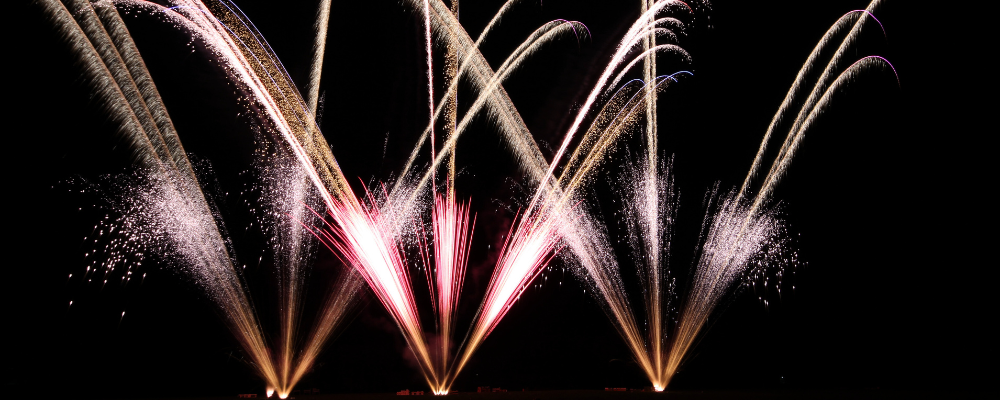Wow! – That’s Cool!
Have you ever gone to an event or performance where a fountain of sparks shot up from a black or silver box? It’s likely that the box you saw emitting the column of sparks was a cold spark machine or cold spark fountain.
What Are Cold Spark Machines?
Cold spark machines are promoted as a safe alternative to traditional pyrotechnics. They are sometimes used for music performances and wedding receptions. DJs may also include these machines as part of their routine at bars, nightclubs, and other venues. Cold spark machines can be used both inside and outside. The machines come in various iterations, including units that twist and turn while shooting sparks and even handheld units with the ability to shoot sparks up to 15 feet.
How Do Cold Spark Machines Work?
The operation of these machines is largely the same: powdered titanium, with other powdered metals, is heated to produce glowing sparks that are then blown out of the unit by a fan. The heating element can reach 600 to 800 degrees Fahrenheit, and the fan can propel the sparks to a height of 15 feet or higher.
Since there is no gunpowder or explosives involved, as in traditional pyrotechnics, these machines are promoted as safe.
The safety of these units is often demonstrated by a user holding their hand in the stream of the discharging sparks without injury. If that’s the case, then the machines are safe, right?
By definition, sparks are hot. They get their glow from the heating of the metal powder. Titanium powder can ignite at temperatures from 437 degrees Fahrenheit to 1,086 degrees Fahrenheit, depending on the size of the powder granules. Thus, the sparks themselves are not “cold”. The ability to not suffer injury while placing one’s hand in the shower of sparks is similar to the ability to avoid being burned when quickly passing one’s hand through a candle flame.
From an insurer’s standpoint, there are several areas of concern regarding the use of these machines.
Property Concerns:
- Sparks may come into contact with flammable clothing or hair.
- Standard fire extinguishers may not be effective against the materials used to create the sparks.
- These units can draw 500-1300 watts of power and may cause electrical circuits to overload.
Liability and Health Concerns:
- The powder (titanium alloy) can cause respiratory, skin, and eye irritation.
- Use of these machines creates smoke.
- After use, the powder may also create slick spots on hard surfaces, introducing an increased risk for slips/falls.
Regulatory Concerns:
Cold spark machines have been classified as Pyrotechnic Simulation Equipment by the National Fire Protection Association (NFPA). The American Pyrotechnic Association has endorsed this classification by NFPA.
While many state fire marshals and local fire departments have also adopted this classification, regulations governing the commercial use of these machines vary widely by local jurisdiction. It is important to note that regulations on personal or home use often differ from those for commercial use.
To investigate further, we contacted a handful of states’ regulators in the area where ICC writes. A few states have statewide regulations on the use of these machines. For example, the state of Minnesota requires that, when used as part of a display, the operator must be certified by the State Fire Marshal and must have either a local or state issued permit (more info).
Some states do not have statewide specific regulations governing these machines but do consider them pyrotechnics and subject to applicable licensing and permitting requirements.
So, are cold spark machines safer than traditional pyrotechnics?
A well-made cold spark machine from a reputable manufacturer using the appropriate sparking powder, operated by a properly trained and licensed or certified operator with proper permits in an environment that provides for proper electrical service, adequate clearances to the audience and combustibles, and adequate ventilation, would generally be considered safer than traditional pyrotechnics.
Even so, there are a number of variables, including the location, operator, equipment, and more that can impact the relative safety of these machines. As a result, ICC considers the use of cold spark machines to be an unacceptable exposure. If this exposure is found to exist, a mandatory requirement to discontinue their use and remove the machines from the premises will be issued.
If you have any questions about whether an exposure is acceptable, please reach out to your ICC agent. To locate an agent in your area, use our Find an Agent search.





